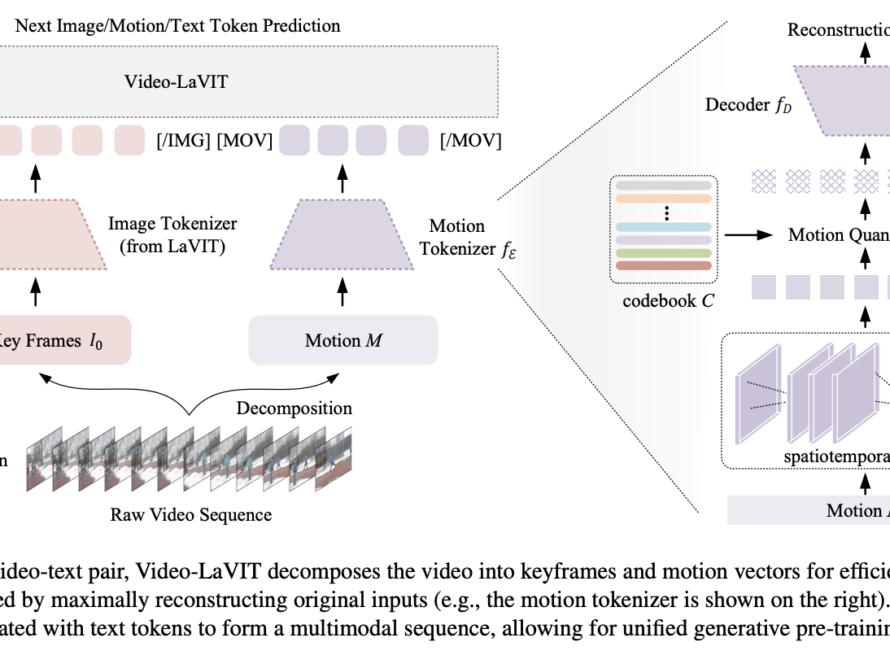Bank Reconciliation is the process of matching the company’s cash books to the bank statement. The aim is to ensure all transactions are accurately recorded in the company’s cashbooks and to find any errors or fraud.
Reconciliation includes matching the company’s balance sheet, income statement, bank statements, and expenses. Having an accurate set of financial statements is essential, or it can lead to complications in financial planning, tax compliance, and legal matters.
As per the Association of Certified Fraud Examiners, businesses lose nearly 5% of annual revenue to fraud and theft. This severely impacts a company’s profitability. Bank reconciliation is crucial for identifying and minimizing such losses.In this article, we will explore the process of bank reconciliation, provide an example of a bank reconciliation statement, offer tips, answer frequently asked questions (FAQs), and demonstrate how to use automation to streamline the reconciliation process.
Bank reconciliation involves matching the money in the bank vs the actual money reflected in the cashbook. Today, reconciliation is primarily automated through reconciliation software to save time and money. However, let’s understand the manual bank reconciliation process once:
Step 1: Gather documents
On the bank side, you need the bank statements, outstanding checks, deposits, and any pending transactions. On the company side, you require the company’s cashbook, which records both incoming and outgoing transactions.
Step 2: Match deposits
Following double-entry accounting, a debit in the bank statement is recorded as a credit in the cashbook, and vice versa. Match the deposits in the two statements.
Note: Bank and cashbook balances are generally not expected to match due to pending transactions, such as outstanding checks or deposits in transit. They have to be adjusted as shown in the next steps.
Step 3: Adjust bank balance
The discrepancy in the two balances has to be identified and checked on an individual transaction basis. Bank statements must be adjusted by adding pending deposits (deposit-in-transit) and deducting pending outgoing checks (outstanding checks). The logic here is:
Bank Balance + Deposits-in-transit – Outstanding Checks = Adjusted Bank Balance
Step 4: Adjust cashbooks
The cashbook balance needs adjustment for bank service fees, accrued interest, and rejected checks (NSF Checks). The logic here is:
Cashbook Balance + Interest – Bank Fees – Rejected Checks = Adjusted Cashbook
Step 5: Compare Balance
After adjustment, the bank balance and cashbook should match. If they are not equal, there is an error in the reconciliation process. Any unwarranted expenses or missing income should be investigated and accounted for during the reconciliation process.
Let’s say you run a small business and you have a checking account with a local bank. At the end of the month, you receive your bank statement, which shows the following information:
- Bank Statement Balance as of Month-End: $10,000
- Deposits made during the month, according to the bank: $4,000
- Checks written and cleared during the month: $5,500
- Bank service charges deducted: $50
- Interest earned on the account: $20
Now, you compare this information with your own accounting records for the same period. Your records show the following:
- Your recorded deposits for the month: $3,800
- Your recorded checks for the month: $5,300
- Your recorded bank service charges: $40
- Your recorded interest earned: $15
Bank Reconciliation Statement:
Starting Bank Statement Balance: $10,000
Add: Deposits Made (Bank’s Record): $4,000
Less: Checks Written and Cleared (Bank’s Record): $5,500
Less: Bank Service Charges (Bank’s Record): $50
Add: Interest Earned (Bank’s Record): $20
Adjusted Bank Statement Balance: $8,470
Now, compare the adjusted bank statement balance ($8,470) with your own accounting records. If they match, it means your records and the bank statement are reconciled, and there are no discrepancies. If there is a difference, it signifies that some transactions need to be reviewed and explained, such as outstanding checks or deposits that haven’t cleared yet.
It’s important to reconcile bank statements to identify errors, detect fraud, and maintain an accurate ledger. Here are the key benefits of bank reconciliation:
- Identify Accounting Errors: The cashbook may contain inaccuracies stemming from duplicate payments, missed payments, lost checks, and even simple human errors. Reconciliation is crucial in identifying and correcting these mistakes before they become permanent.
- Rectifying Banking Errors: The bank statement may contain errors like undue penalties or incorrect transaction records. If you identify any such errors, you can dispute and rectify them with your bank.
- Fraud Prevention: This stands out as a key benefit of bank reconciliation. When cross-referencing records, it becomes straightforward to pinpoint any transactions that were not supposed to occur. It’s plausible that either a team member or a hacker executed unauthorized transactions to steal from the company. Regular reconciliation helps catch and stop potential fraud early, giving the bank time to reverse transactions.
- Accurate Tax Reporting: Reconciliation helps form an accurate set of financial records on a timely basis. Filing tax returns requires an accurate record, or you can incur penalties. Regular Bank Reconciliation simplifies the tax reporting process during the financial year’s end.
- Financial Optimization: Identify and Save on unwarranted fees like overdrafts or penalties.
We have discussed the benefits of reconciliation. Let’s look into how we can streamline the process using tools and strategies.
Tips for effectively reconcile bank statements
- Organize your financial records: Maintaining an organized system for storing financial documents is essential. This includes keeping track of receipts, invoices, and bank statements. Consider using digital tools or software to digitize and categorize your documents, making them easily accessible for reconciliation.
- Regular reconciliation: It’s crucial to reconcile your bank statements regularly, ideally on a monthly basis. This frequency helps you catch discrepancies early and ensures that errors don’t accumulate over time. Regular reconciliation also enhances your ability to manage cash flow effectively.
- Segregate duties: If possible, involve multiple individuals in the reconciliation process. This practice helps reduce the risk of errors and fraud. Separate responsibilities among team members, such as recording transactions, reconciling accounts, and approving discrepancies, to maintain a system of checks and balances.
- Check for timing differences: Be vigilant about timing differences between when transactions are recorded in your financial records and when they appear on the bank statement. Adjust for deposits in transit (deposits you’ve made but haven’t yet cleared) and outstanding checks (checks you’ve written but haven’t been cashed by the payee).
- Review bank statements carefully: Take the time to review each line item on your bank statement thoroughly. Careful scrutiny can help you identify any discrepancies or irregularities that may require further investigation or correction. Pay attention to transaction dates, amounts, and descriptions to ensure accuracy in your records.
- Verify interest and fees: Scrutinize your bank statements for accuracy regarding bank service charges, fees, and interest earned. Ensure that any interest earned is correctly credited to your account, and question any unexpected fees or charges with your bank if necessary. These charges can impact your account balance and financial records.
- Use reconciliation software: Consider leveraging accounting or reconciliation software to streamline the process. Many modern software solutions can automatically sync with your bank accounts, categorize transactions, and provide real-time updates. These tools can significantly reduce manual effort and errors in the reconciliation process.
Bank reconciliation is a time-consuming process with many manual steps. Most automation tools provide OCR capability that extracts relevant information from documents. However, this is just one aspect of your workflow. You need a tool to build a customized workflow, automating business logic while integrating with existing tools.
Nanonets is an AI-powered workflow automation solution that simplifies and streamlines account reconciliation. It automates various steps, reduces manual effort, and increases efficiency by 10x.
Automate your mortgage processing, underwriting, fraud detection, bank reconciliations or accounting processes with a ready-to-use custom workflow.
The Nanonets bank reconciliation workflow works like this:
- Automated import: Nanonets can automatically import documents like bank statements from mail or through the bank API.
- Data extraction: Nanonets uses state-of-the-art optical character recognition (OCR) technology to extract relevant data accurately. This eliminates the need for manual data entry, which can save time and reduce errors.
- Data matching: Nanonets allows you to set up a rule-based matching to identify and reconcile transactions across different systems. This helps ensure that all transactions are accounted for and there are no errors.
- Approval: Nanonets can automate the account reconciliation process, from data entry to approval. This can free up time for accountants to focus on other tasks.
- Centralized repository: Nanonets provides a central repository for supporting documentation. This makes it easy to find and access documents when needed.
If Nanonets meets your business requirements, you can get in touch for a customized quote.
FAQs
What are the 4 steps in the bank reconciliation?
Compare records: Match your internal financial records with the transactions listed on the bank statement to identify any discrepancies.
Adjust balances: Factor in any outstanding checks, deposits in transit, bank fees, and errors to adjust the balance of your financial records accordingly.
Journalize differences: Make the necessary journal entries for discrepancies between your records and the bank statement after adjustment.
Verify final totals: Review the adjusted book balance and the adjusted bank balance to ensure they are now reconciled and the same.
If there are differences, investigate and resolve them to ensure that the records are accurate, complete, and within the financial reporting framework.
How do you reconcile a bank statement?
To reconcile a bank statement, compare your internal ledger against the bank statement for the same period. Identify any mismatched transactions, such as deposits in transit and outstanding checks. Adjust for bank errors, fees, and interest. Make journal entries for these adjustments and review the final reconciled balance to confirm that the records align.
What is BRS in simple words?
Bank Reconciliation Statement (BRS) is a document that matches the cash balance on a company’s balance sheet to the corresponding amount on its bank statement, reconciling any differences to ensure that the figures are accurate and consistent. It serves as a check to verify that all transactions have been recorded correctly in the company’s and the bank’s records.
Is bank reconciliation debit or credit?
Bank reconciliation itself is neither a debit nor a credit. It is a process of comparing the balances and transactions in one’s accounting records against the bank statement to identify any discrepancies and make the necessary adjustments to the accounting records.
What are the steps to reconcile a bank statement?
Identify discrepancies:
Compare each transaction from your accounting records with those listed on the bank statement to spot any differences.
Add or subtract adjustments:
Record any bank fees, interest income, or errors found on the bank statement that are not yet in your accounting records.
Record outstanding items: Account for any outstanding checks or deposits that have not cleared the bank.
Reconcile and verify: After accounting for all differences, ensure the adjusted bank statement balance matches your reconciled internal records.
How do I reconcile a bank statement in Excel?
Use Nanonets to extract transaction data from your bank statement, then export it to Excel. Create a reconciliation template and annotate each column for deposits, withdrawals, bank fees, and checks. Import your ledger data and use Excel’s sorting and filtering tools to match transactions. Apply formulas to calculate differences automatically and use pivot tables to summarize the data. Adjust for any outstanding items and verify that the ending balances match to complete the reconciliation process.



